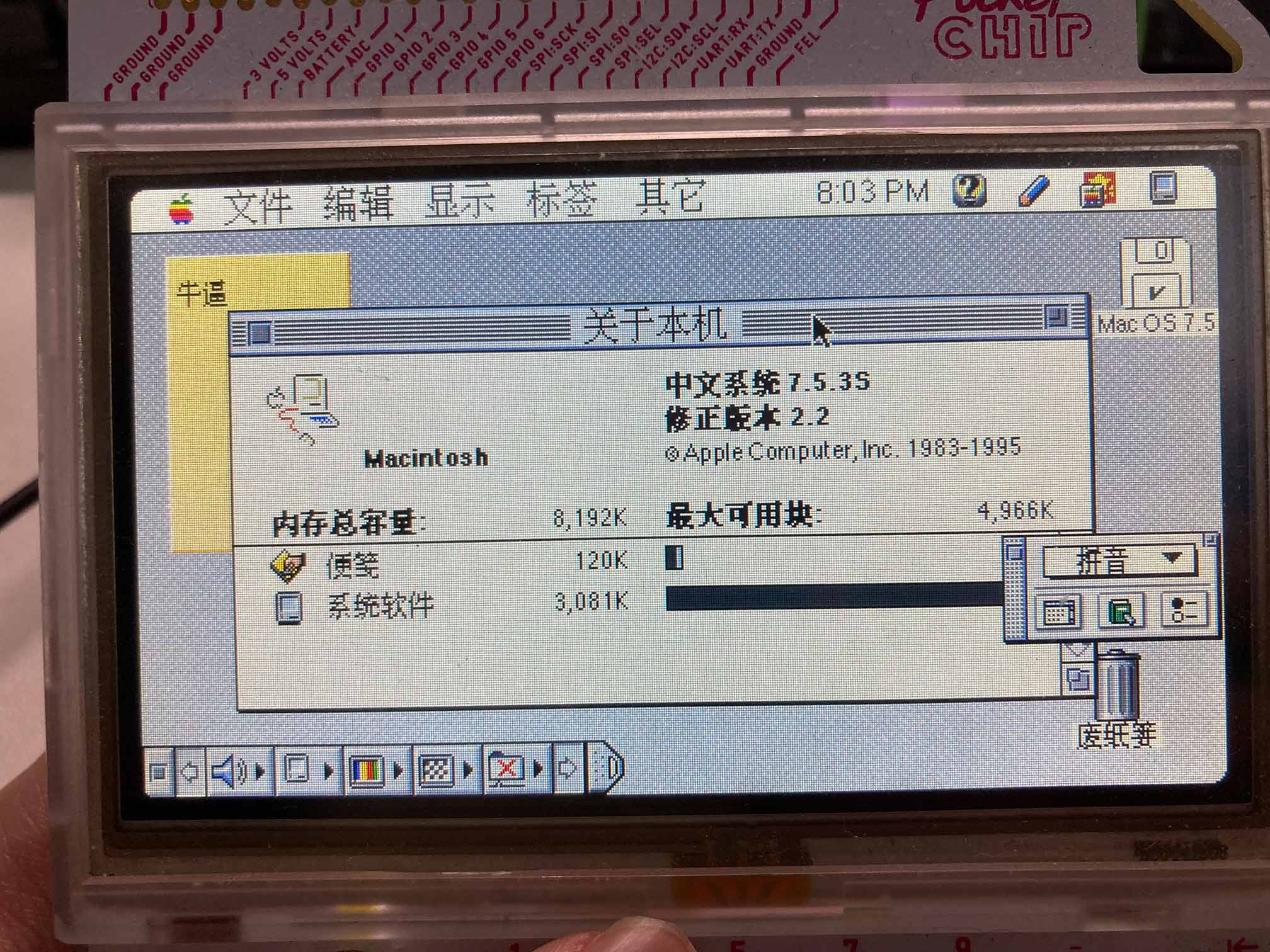
When it comes to emulation, there’s nothing quite like the ingenuity of the Linux community. Today we’re sharing a neat project from maker and developer Paul Rickards, aka Biosrhythm. Using a handheld Linux platform known as PocketCHIP, Rickards has set up a Mac II emulator known as Mini vMac. If PocketCHIP sounds familiar, it's probably because we've previously covered a Raspberry Pi version designed to work with a Raspberry Pi CM4.
The PocketCHIP unit is battery-powered which makes it totally portable. It’s intended to work with Linux operating systems, but you do have a bit of flexibility when it comes to choosing an OS. It features a QWERTY keyboard for user input and also sports a 480 x 272px touchscreen for video output.


According to the official documentation, Mini vMac is an emulator collection designed to bring compatibility with old Macintosh software on newer hardware. Mini vMac is part of the Gryphel Project, which intends to preserve Mac software from 1984 to 1996. And thanks to this PocketCHIP project, you can now take the old-school Mac experience with you on the go.
When Rickards set out to run Mini vMac on the PocketCHIP, he was delighted to discover a package already put together by another maker known as Zzxzzk115 (you can find this package over at GitHub). This configuration is made just for PocketCHIP but required a little bit of work from Rickards to get up and running on the handheld.
Setting up Mini vMac will vary depending on what OS you’re starting with. In this case, Rickards is using the Jessie distribution of Debian so it took some extra steps to get off the ground — which might not be necessary if you’re running Bookworm (the latest). You can follow along with Rickard’s steps over at his official Biosrhythm blog.
If you want to recreate this setup, or even turn it into a Raspberry Pi project, check out the original blog post shared by Rickards — and look into the CM4 version of the PocketCHIP to make it Pi-flavored.







